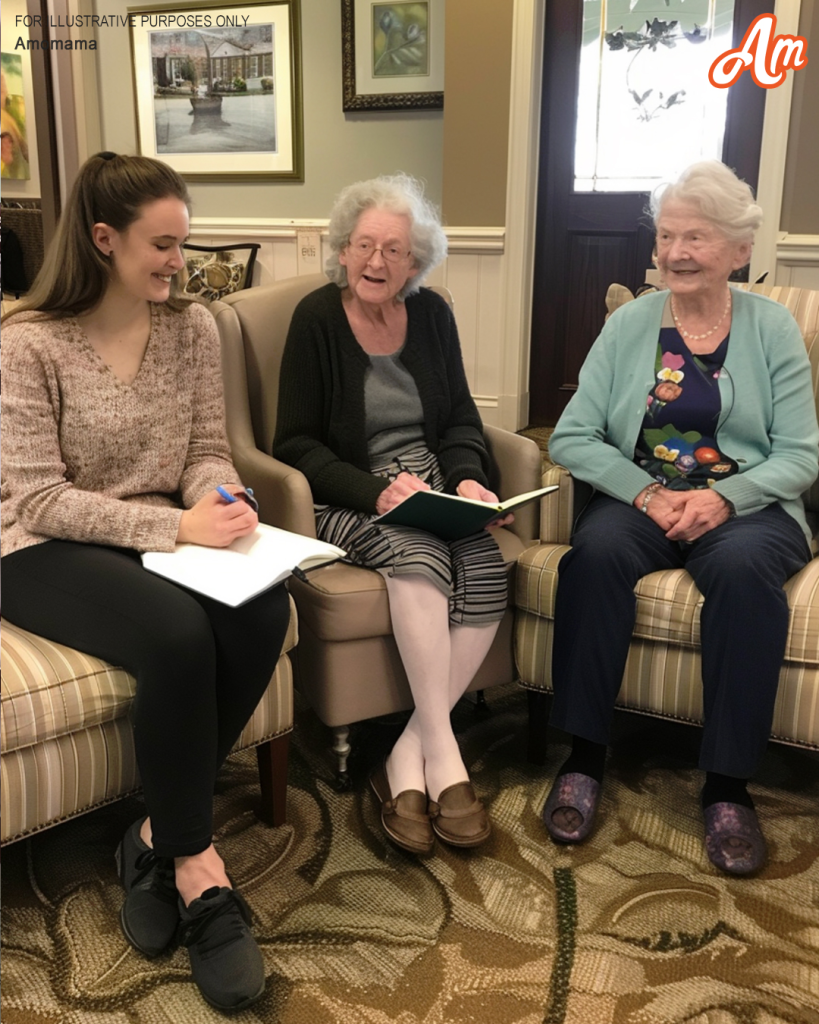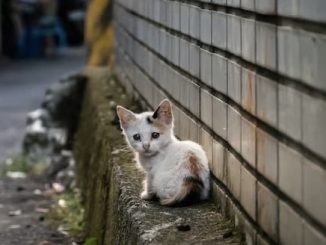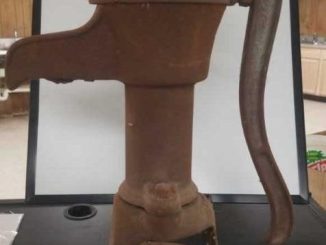
The sterile scent of antiseptic hung heavy in the air as I navigated the maze-like corridors of the nursing home. I clutched a stack of donated blankets, a small gesture of comfort for the residents. As I rounded a corner, I came upon a heartwarming scene. A group of elderly residents, their faces a tapestry of wrinkles and age spots, sat in a circle, their eyes fixed on a young woman. She sat on a low stool, a small journal resting on her lap, her pen moving swiftly across the page.
“She comes every week,” a nurse whispered to me, her voice hushed. “None of them are her family.”
Intrigued, I watched from a distance. The residents, their voices frail and reedy, recounted stories of long-ago loves, childhood adventures, and wartime experiences. The young woman listened intently, her eyes filled with a gentle curiosity. She would occasionally pause, asking a clarifying question, her voice soft and soothing. As she listened, she meticulously recorded their words, capturing their memories in ink.
Later, I approached the young woman, thanking her for her kindness. “Many of them get no visitors,” she explained, her smile warm and genuine. “Their memories are fading, and I worry that their stories will be lost forever. So, I come here every week and listen. I write down their names, their life stories, the names of their loved ones, the places they’ve been, the things they’ve done. It’s a small thing, but I hope it helps them feel seen and heard.”
Her words struck a chord within me. In a world that often prioritizes the new and the shiny, it was easy to forget the importance of the past, the stories that shaped us. These elderly residents, with their fading memories, were a living archive of history, their lives a testament to the resilience of the human spirit. And this young woman, with her simple act of kindness, was ensuring that their stories would not be forgotten.
As I walked away, I couldn’t shake off the image of the young woman, her pen dancing across the page, capturing the essence of a life lived. Her actions were a powerful reminder that true compassion lies in the small, everyday gestures of kindness, in the act of simply listening and acknowledging the humanity of others.
The experience left me pondering the fleeting nature of time and the importance of preserving our memories. It made me realize that everyone has a story to tell, a legacy to leave behind. And sometimes, all it takes is a listening ear and a pen to ensure that those stories are not lost to the sands of time.
Later that day, I found myself reflecting on my own life, on the stories I wanted to tell, the memories I wanted to preserve. I started a journal of my own, a place to record my thoughts, my experiences, the joys and sorrows, the triumphs and failures. I wanted to make sure that my own story, however ordinary, would not be forgotten.
The young woman at the nursing home had shown me the power of empathy, the importance of connecting with others, and the enduring value of human connection. Her simple act of kindness had not only brought comfort to the elderly residents but had also inspired me to live a more meaningful life, one that valued the stories of others and cherished the memories that shaped us.
As I drifted off to sleep that night, I imagined the residents at the nursing home, their faces lit up with a sense of purpose as they recounted their lives to the young woman. I imagined their stories, their laughter, their tears, all preserved on the pages of her journal, a testament to their lives, a legacy for future generations. And I knew that in a small way, I too was contributing to the preservation of those stories, by sharing my own and by reminding myself of the importance of listening, of connecting, and of cherishing the memories that make us who we are.
The world, I realized, is filled with stories waiting to be told, with lives waiting to be remembered. And in the quiet moments, in the simple acts of kindness, we can all play a part in ensuring that those stories live on.
He was asked about grandparents. Little boy’s message about grandmas goes viral

Grandmothers occupy a special place in our hearts, showering their love on their grandchildren and always willing to go the extra mile for them. Unlike parents, who are often burdened with daily responsibilities, grandmothers can focus solely on their deep affection for their grandchildren.
A heartwarming video featuring a young boy in an adorable martial arts outfit has captured the internet’s attention. When asked about why God created grandmothers, his response is priceless. While his answer is simple, it carries profound truth.
However, it’s not just their forgiving nature that makes grandmothers extraordinary; they also know how to have fun. They get to relive the joys of childhood without the burdens of responsibility.

There’s no worry about finances, healthcare, or schooling—just pure enjoyment. Establishing traditions like going out for all-you-can-eat buffets or watching movies together becomes treasured moments in the grandparent-grandchild relationship.
While there is ample evidence highlighting the greatness of grandmothers, this young boy’s video offers a unique perspective. We won’t spoil it; it’s best to watch for yourself. Prepare to be touched by his heartfelt thoughts on his grandmother and mother.
How does this video of the boy make you feel? If you find it as heartwarming as we do, consider sharing it with others. Grandmothers truly are a precious gift!



Leave a Reply